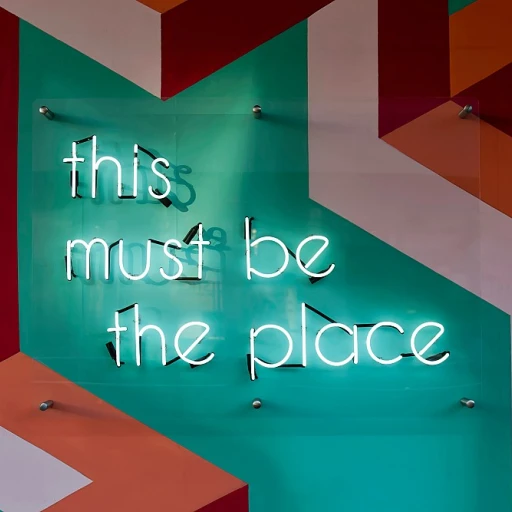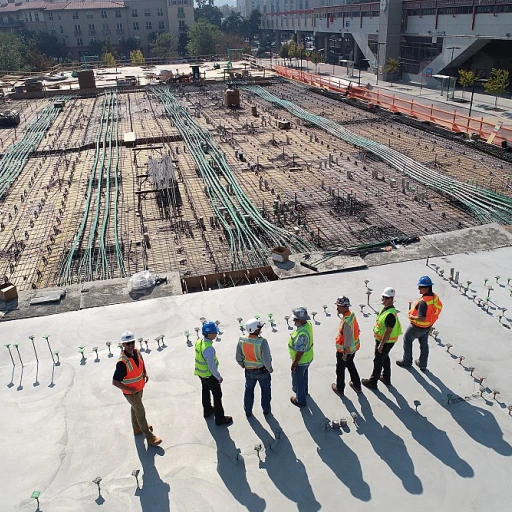
Understanding the Total Rewards Concept
Embracing the Total Rewards Framework
The concept of total rewards goes beyond the traditional pay structures. It's a holistic approach that combines various elements to create a comprehensive total rewards package tailored to meet both the organization's objectives and the employees' needs. This strategy incorporates compensation benefits, developmental opportunities, and recognition initiatives to promote employee satisfaction and motivation. Understanding the intricacies of total rewards is crucial for organizations aiming to attract top talent and retain them in the long term. It involves creating a balanced rewards program that aligns with the organization's culture and goals. A successful rewards strategy addresses key areas such as competitive pay, career development, work-life balance, and employee wellbeing.- Compensation and Benefits: These remain core components in any rewards strategy. The goal is to offer a competitive pay structure that reflects the market demands while ensuring fairness and equity within the organization.
- Development Opportunities: Emphasizing career development can greatly enhance employee engagement. Providing pathways for career growth not only benefits employees in their personal careers, but also boosts organizational performance.
- Work-Life Balance: Programs designed to support life balance are becoming increasingly important. Organizations should consider introducing flexible working arrangements and wellbeing initiatives to address this need.
- Recognition and Engagement: Implementing a robust rewards recognition program is key to fostering an encouraging organizational culture. Recognizing outstanding job performance and rewarding employee contributions can greatly enhance company morale.
Aligning Rewards with Business Goals
Creating alignment between rewards and business goals is a core component in developing an effective total rewards strategy. To achieve this, HR leaders must first understand the organization's objectives and make sure that the rewards program is designed to support these goals.
Integrating Rewards into Business Objectives
The integration of rewards into business objectives involves identifying what drives company performance and how employee contributions align with these drivers. A strategically aligned rewards strategy takes into account the specific business outcomes desired by the organization, ensuring that each component of the rewards package incentivizes the desired employee behavior.
Consider whether compensation benefits and employee recognition are contributing positively to achieving organizational targets. This involves evaluating whether employees feel motivated and recognized for their efforts in a manner that not only boosts their individual performance but also advances the company's business outcomes.
Customization of Rewards Programs
Customization is key in designing effective rewards programs that resonate with the diverse workforce of an organization. It involves catering to different employee needs, aspirations, and life stages. Offering a blend of financial incentives along with non-monetary rewards, development opportunities, and a supportive organizational culture can drive employee engagement and satisfaction.
Adapting rewards programs to reflect the business's strategic goals can foster more productive behaviors. For instance, incorporating career development and work-life balance initiatives can enhance employee wellbeing, leading to a more engaged and dedicated workforce that supports the company’s long-term success.
Communicating the Purpose of Rewards
Transparent communication about how rewards align with business goals is essential. Employees need to understand how their performance contributes to broader organizational objectives and how their efforts are rewarded. This fosters a culture of trust and empowerment, enhancing employee engagement and retention of top talent.
Effective communication about the total rewards strategy helps in managing employee expectations and fortifies the organizational culture, making it clear how individual roles contribute to achieving company goals.
Evaluating Compensation Structures
Reassessing Pay Structures for Employee Satisfaction
- Comprehensive Analysis: Begin by conducting a comprehensive analysis of existing compensation packages. This involves comparing current salary ranges with industry standards, understanding the role of performance-based pay, and considering the potential for merit increases.
- Linking Pay to Performance: Implement a performance evaluation system that reflects individual and team contributions to organizational goals. This promotes a culture of rewards recognition, where employees feel valued for their contributions.
- Career Development Opportunities: Develop clear career pathways within your organization to support employee growth. Offering long-term development opportunities could include mentoring programs, skills development workshops, and access to educational resources.
- Flexible Compensation Benefits: Creating a diverse range of compensation benefits can cater to the varied needs of your workforce, supporting employee wellbeing beyond monetary rewards. Examples include additional leave, remote work options, and flexible work hours contributing to work-life balance.
Enhancing Employee Benefits
Maximizing Employee Benefits for a Balanced Work-Life
Creating a comprehensive total rewards strategy in an organization involves more than just adjusting compensation programs; it’s about enhancing employee benefits to foster a supportive organizational culture. Employees today value work-life balance, and developing an effective total rewards package must take this into account. First, consider evaluating the current benefits program within your organization. Understanding what employees value most—such as flexible work hours, remote work opportunities, or enhanced healthcare benefits—will serve as a solid foundation for redesigning your benefits component. It ensures alignment with employee needs and broader organizational goals. Investing in career development opportunities is a crucial aspect of employee well-being. Organizations benefit from offering programs that support long-term career growth, such as training, mentorship, and skill enhancement initiatives. By doing so, companies not only improve employee satisfaction but also boost engagement and performance. Moreover, fostering a culture of rewards and recognition plays a significant role in supporting comprehensive total rewards strategies. Recognizing achievements, whether through formal rewards programs or informal acknowledgments, enhances job satisfaction and encourages a high-performance culture. Ultimately, a well-rounded benefits program should not only meet the company's strategic goals but also drive greater employee engagement and retention. Organizations that successfully integrate these elements into their total rewards strategy are more likely to attract and retain top talent, sustaining a culture where employees feel valued and motivated to contribute to the company's success.Fostering Employee Engagement and Recognition
Driving Employee Engagement Through Recognition and Cultural Alignment
In crafting a successful rewards strategy, fostering an environment of employee engagement and recognition is essential. Employee engagement is crucial for maintaining a motivated and productive workforce, and recognition plays a key role in achieving this. A comprehensive total rewards approach should integrate various components that cater to employees' diverse needs and aspirations. When employees feel valued and recognized for their contributions, it fosters a positive organizational culture and enhances job satisfaction. To create a culture of recognition, consider the following strategies:- Regular Feedback and Recognition: Implement programs that provide consistent feedback and acknowledgment of employees' achievements. This could include rewards programs that celebrate performance milestones and personal achievements.
- Aligning Recognition with Core Values: Ensure that recognition initiatives align with your company's core values and business goals. This encourages a deeper connection between employees and the company mission.
- Inclusive Recognition Practices: Develop inclusive programs that consider the diverse workforce. Recognize efforts at all levels, ensuring fairness and equality in appreciation efforts.
- Promote Work-Life Balance: Recognizing the importance of work-life balance can significantly contribute to employee wellbeing. Implement policies that support flexible working conditions and emphasize life balance.
Measuring the Success of Your Total Rewards Strategy
Assessing the Impact of Your Rewards Strategy
To ensure your total rewards strategy is effective, it's crucial to measure its success. This involves evaluating how well your rewards programs align with the organization's goals and contribute to employee satisfaction and engagement. A comprehensive assessment will help you identify areas for improvement and ensure your strategy remains relevant and impactful.
Key Metrics for Evaluation
Consider using a variety of metrics to gauge the effectiveness of your rewards strategy:
- Employee Satisfaction Surveys: Regularly conduct surveys to gather feedback on compensation, benefits, and recognition programs. This will provide insights into employee wellbeing and satisfaction.
- Engagement Levels: Monitor employee engagement through performance metrics and participation in company initiatives. High engagement often indicates a successful rewards program.
- Retention Rates: Track turnover rates to see if your rewards package is effective in retaining top talent. A decrease in turnover can signal a successful strategy.
- Performance Metrics: Evaluate how rewards impact employee performance. Improved performance can be a direct result of effective total rewards strategies.
- Alignment with Business Goals: Ensure that your rewards strategy supports long-term organizational goals. This alignment is crucial for sustained success.
Continuous Improvement and Adaptation
Measuring success is not a one-time task. Regularly review and adapt your rewards strategy to meet the evolving needs of your employees and organization. Consider incorporating feedback from employee satisfaction surveys and engagement metrics to refine your approach. Additionally, stay informed about industry trends and best practices to maintain a competitive edge.
By continuously evaluating and adjusting your rewards programs, you can foster a positive organizational culture that supports career development, work-life balance, and employee recognition. This proactive approach ensures your total rewards strategy remains effective and aligned with both employee and company goals.












